Scientific and technological revolution in the field of the Navy
The year 1945 marks the end of the 600-year era of artillery ships weapons.
This story began with the Christophe sailing karaka with three bombers, and her first shots at the battle of Arnemaden (1338). And it ended with a series of Des Moines cruisers, where one gun barrel was as long as the entire karaka of the XNUMXth century.
Why is “Des Moines” taken for the finish line and not “Murmansk” (the last representative of the project 68 bis) laid down eight years later? Or the impressive battleship Vengard, which entered service in 1946?
The answer is simple. Naval artillery stopped in its development on the Des Moines project (the leading SRT was laid in May 1945, commissioned in 1948). Designed for Des Moines, automatic guns combined the power of an eight-inch caliber with a six-inch rate of fire. And it was wonderful.
And nothing more significant in the field of naval artillery has since been created. Just as not a single artillery ship was built, on which great hopes would be placed.
The Soviet-built 68-bis cruisers built after the war, like the LKR “Stalingrad” (project 82), were a development of projects of the 30s. The first were built more likely to revive the shipbuilding industry of the USSR. The second was removed from construction, and this fact puts an end to further discussion.
The British HMS Vanguard was equipped immediately with 22 radars and had unique capabilities in terms of fighting for survivability. A design that has absorbed the experience of both world wars. The flawless silhouette of the battleship was violated by the GK towers, inherited from the battlecruisers Koreges and Glories, which were converted into aircraft carriers in the mid-1920s. The gun turrets in the warehouses were rusted for two decades, until the creators of the Wangard paid attention to them. By the way, the 381-mm Mark I gun itself was developed before the First World War.
No one was going to create a new weapon for the latest battleship.
This fact once again confirms the stagnation and death of naval artillery in the mid-1940s.
What came to replace her? Probably, aviation?
After the war in the United States, of the six Midway-type aircraft carriers, only three were completed. And the construction of the head super-carrier “United States” was stopped five days after laying (1949).
As for the USSR, there the presence of aircraft-carrying ships in the Navy was not visible even in the long term.
In the end, the fleet cannot consist of aircraft carriers alone.
What were the ships of other classes armed with that replaced the cruisers and battleships?
They were armed with rockets!
The first domestic ship with missile weapons was the cruiser Admiral Nakhimov (68 bis). On its board in 1955, the experimental complex “Quiver” with the RCC “Comet” ship-based was installed.
The following year, the design of the first ships, originally designed for missile weapons, began in the USSR. And the obsolete KRL “Nakhimov”, despite its young age, was soon decommissioned and sent for cutting.
Notice, we managed to travel back in time to the end of the 1950s!
Across the ocean, the first missile carriers (Long Beach and Feregat) were also laid in 1957.
A pair of refitted Baltimore feed with Terrier air defense missile systems, like the domestic Nakhimov, does not count. Not the most successful improvisations based on artillery cruisers of the past.
It remains to be noted that in the period from the end of the war until the end of the 50s, not a single ship of the “new era” was built in our country or abroad.
All this time, the American fleet consisted of ships laid down during the Second World War.
After defeating Japan, the United States suddenly found that their fleet was out of work. All maritime powers were defeated on their backs. Those that have not completely lost their ambitions have moved into the category of allies. And the main and only rival had practically no fleet. The USSR was in no way dependent on maritime communications, and its territory stretched thousands of kilometers deep into the Eurasian continent.
The interests of the fleet receded into the background and for a long time forgot about it.
The Soviet Union at that time was conducting the belated construction of artillery ships with the goal of at least saturating the Navy. And breathe life into the shipbuilding industry.
The reasons are different, but the result is one. The transition from artillery to missiles took more than TEN YEARS. During which virtually nothing was done to move to a new level.
Everything happened in an instant, in 1956-57.
And then it suddenly turned out that the ships of the rocket era can have nothing to do with their predecessors!
Firstly, it turned out that the Navy will no longer see large ships.
The terms of the naval treaties of the 1930s, which spelled out the limitations of the standard displacement for cruisers “not more than 10 tons” or “000 tons” for battleships, seemed new in some conditions grotesque.
In the Soviet Union, missile ships were designed on the basis of destroyer corps. In an effort to emphasize their status, destroyers were reclassified to “cruisers” during the construction phase. And those that were built as “watchdogs” turned into “large anti-submarine ships”.
Overseas has a similar situation. The Feragat is a destroyer. The larger Legi is the leader of the guided missile destroyer (DLG).
How else to designate ships with a total displacement of 5 thousand tons?
The Legs are slightly larger - about 7800 tons. But on board are three missile systems at once, coupled with oceanic autonomy, previously available only to the best cruisers and battleships.
The real giant was only Long Beach (16 tons). In the title illustration of the article, you can see how this "white elephant" plows the Sea of Okhotsk, accompanied by the battleship of the Iowa class.
When creating the Long Beach missile cruiser, the base ... was chosen for the hull of the Baltimore heavy cruiser.
It installed all available and all promising weapons systems. They “stuck” a cubic superstructure, whose walls were decorated with phased arrays of the SCANFAR experimental radar. Installed 4 missile systems, including the cyclopic Talos, whose 3-ton rockets were assembled from individual components in the workshops of the rocket plant directly on board the ship. The boilers were replaced by nuclear reactors, but the giant 200-meter Baltimore building, being underloaded, continued to stubbornly rise from the water.
Then the designers decided on a desperate step. As the main caliber for the "white elephant" was proposed a set of ballistic missiles "Polaris". Eight reserved mines in the middle of the hull for 13-ton rockets.
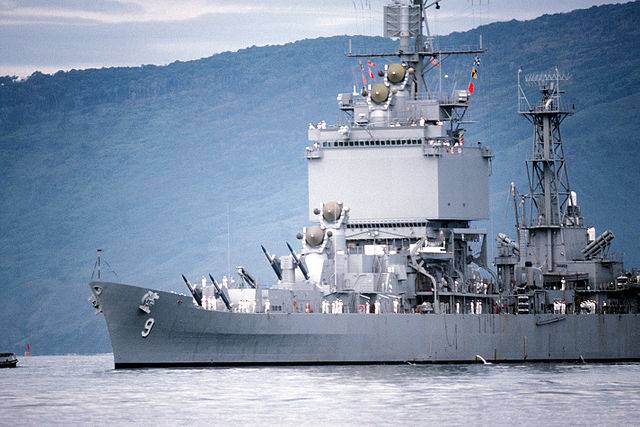
Apparently, overseas they really missed the cruisers of the past era. In terms of their outstanding size and monumental appearance. They decided to build a giant missile ship, but could not find adequate and justifying weapons.
Subsequently, this awkward cruiser with a nuclear power plant became a source of inspiration when creating the domestic "Orlan".
But the speech in this article is still not about the strange ways that technical progress sometimes turns, but about the ships created at the turn of the 50-60s. The firstborn of the rocket fleet.
See what results the Soviet designers achieved in this race!
True masters “fit” maximum weapons into limited sizes.
Project 61. The parent was laid in 1959.
“Singing Frigates” - this is the name of the world's first series of warships with gas turbine power units. Yes, once we were leaders in the field of ship power plants. “Without asking for help from anyone, she herself rose from the ashes of war and dust ...” (K. Simonov).
When the representatives of the project came into operation, 61 were classified as “watchdogs” (TFR). Then, adjusted for dimensions (standard in / and - 3500 tons) designated as BOD II rank. Decades later, when the fleet was saturated with more modern units, they were returned to their original designation - TFR.
The point is not in the power plant, which allowed to develop the course from the cold state in 15 minutes (instead of the few hours required for the "dilution of vapor" KTU). Not in the presence of atomic protection and not in the placement of the main command post on the lower deck. These are obvious consequences of technological progress.
The main feature is in a situation in which there is no need for a large displacement. After all, until recently, 10 tons were missing for ships of this importance.
How can I describe the capabilities of the BOD, in comparison with the ships of the artillery era?
BOD pr. 61 corresponded in size to the leaders of the destroyers ("Tashkent", "Mogador").
"Tashkent" could fire shells weighing 33 kg.
The “Singing Frigate” could deliver to a range of 14 km ammunition weighing 500 kg (after the burning of a turbojet engine) containing 32 kg of explosives!
To "ship" the enemy half a ton of death, in the past era, an artillery gun weighing 55 tons was required (along with the bolt). It made sense to install such a system only on ships with a displacement of tens of thousands of tons. In this case, the performance of the 305-mm guns of the battle cruiser "Alaska".
Where is Alaska and where is the “singing frigate”?
Shooting on surface and air targets in this context does not matter. "Frigate" operated ammunition of such a mass that previously used only LKR and battleships.
Despite its microscopic displacement, against the background of the ships of the past BOD, Project 61 was armed with two M-1 Volna anti-aircraft missile systems related to the ground S-125.
Double girder PUs - one each in the bow and stern. The ammunition of each air defense system was carried out from two eight-shot drum-type stores. The total ammunition consisted of 32 missiles, which had a starting weight of 900 kg.
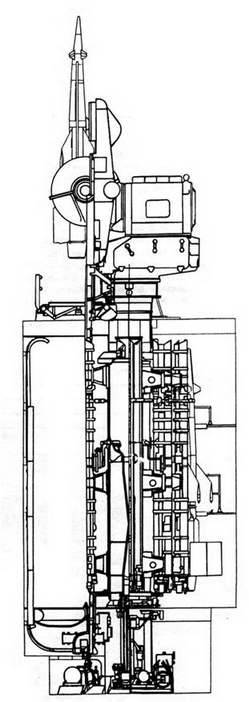
Each air defense system included a bulky Yatagan post consisting of four antenna devices. All this is on radio tubes. Hence the outstanding dimensions with very unconvincing characteristics. So, the effective firing range was only 14 km. But give a discount on the imperfection of the technology of the 50s!
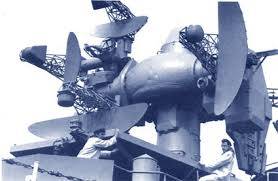
In the next modification of the Wave, this value increased to 22 km, without a noticeable change in the mass and dimensions of the rocket (end of the 1960s)
Designers of Project 61 did not forget about the "destroyer" origin of the ship. In addition to missile weapons, a full set of mine-torpedo weapons (mine rails, 533 mm torpedoes and RBU) was stored on board.
To top it off, there was a place for artillery. Despite the small caliber (76 mm), the AK-726 artillery pieces occupied a significant share of the mass of weapons of the BOD. Each weighed 26 tons: the result of full automation and the rate of fire of 100 rds / min. on each trunk.
By modern standards, the “singing frigate” had an exceptionally powerful propulsion system for its size. 72 000 h.p.
Of course, this is not “Tashkent”, which had the same size of power plants with a capacity of 130 hp. Unlike torpedo attacks and artillery duels, where speed could be crucial, for rocket ships this parameter faded into the background. Missiles will overtake any enemy, regardless of the difference in speed plus or minus several knots.
We note this as another global change in ship design standards. For all subsequent years, the trend was only to reduce the power of the power plant and increase its operational qualities.
Having familiarized themselves with the appearance of the project 61 BOD, many will express doubts about its sufficient autonomy and seaworthiness. A full-fledged ship from the “tin” with a standard displacement of 3500 tons and a total of 4400 tons cannot be obtained.
Do not forget, this is a ship of a new era, for which all the laws of the past ceased to work. The side height in the bow of the “singing frigate” reached 10 meters!
This is one of the most important signs of missile ships. It is still weakly manifested in small units, such as pr. 61, but it becomes especially evident in larger examples.
Where the upper deck used to go and the main-caliber towers stood, now the hull structures continue upward. Ships have a small draft relative to the freeboard height, almost throughout the hull.
Let me explain again: the ratio of the underwater and surface parts of the hull has changed. Many were interested in what would happen to the modern "high-breasted" ship if they decided to install an armored citadel on it. By the type of ships of the past. The answer is nothing. He would have "donkey" a few meters in the water, returning to the proportions of the ships of the first half of the twentieth century.
As for doubts about the sufficient autonomy of BOD Project 61, this is partly true. The USSR Navy ordered ships of the near sea zone. Increasing autonomy for them was a matter of technology. And the sizes of battleships are useless there.
Nothing like the “Washington restrictions” and the torment of designers who could not build a balanced ship with a standard displacement of 10 tons.
Take a look at the next generation of Soviet missile ships. Missile cruiser pr. 1134 (“Berkut” code) with a standard displacement of 5300 tons. Full - just above 7000.
At the same time, there are twice as many weapons on board than the BOD Pr. 61.
The same story as with the cruisers URO "Belknap" and "Lehi". Well, who dares to blame these ships for insufficient autonomy?
I hope readers will enjoy such a versatile excursion into the history of the navy.
This material will help to answer frequently asked questions. What changes did the fleet end with the end of World War II? Why don't battleships build anymore?
Because 5000 tons and 50 tons are disproportionate.
As the Long Beach example showed, the designers could not properly dispose of the displacement reserves inherited from the heavy cruiser of the past era. 16 tons turned out to be excessive for a rocket ship of the period of 000-50s.
But time does not stand still.
In the last years of the existence of the USSR in the field of naval weapons, a new technical revolution took place. I am not afraid to say that modern ships have more differences with ships of the Cold War period than the first-born, RKR, compared to ships of the artillery era.
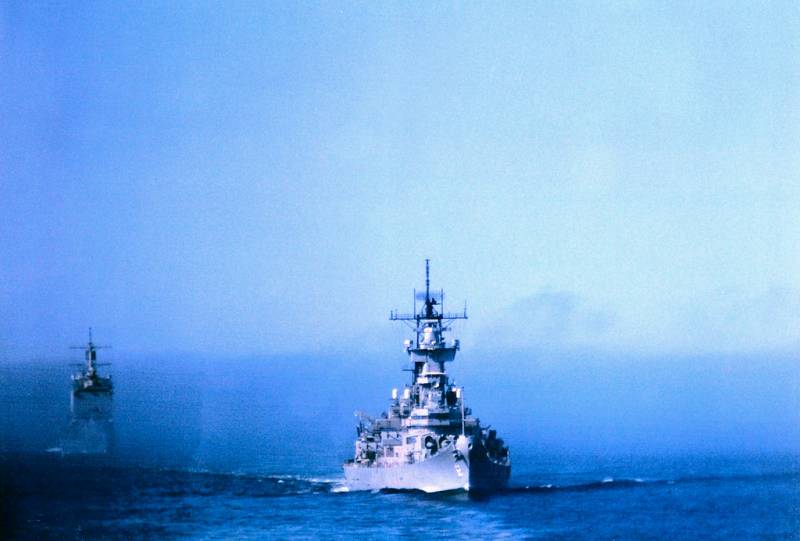
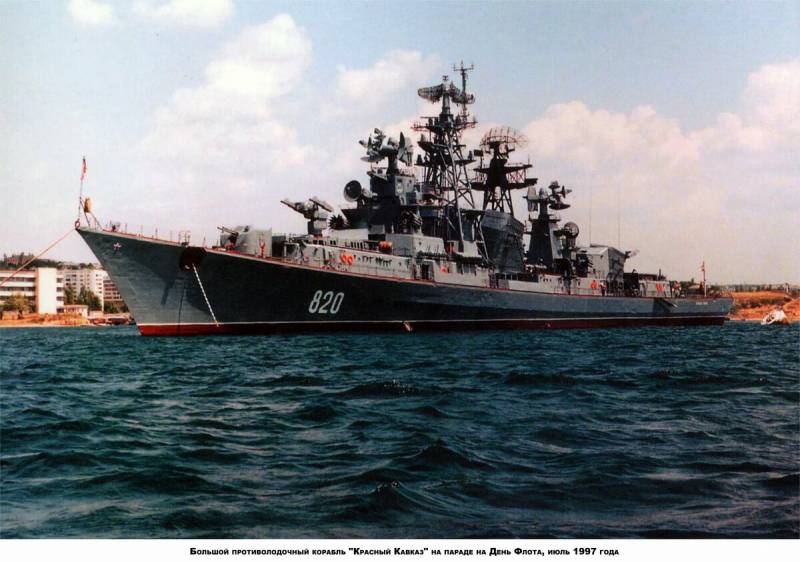
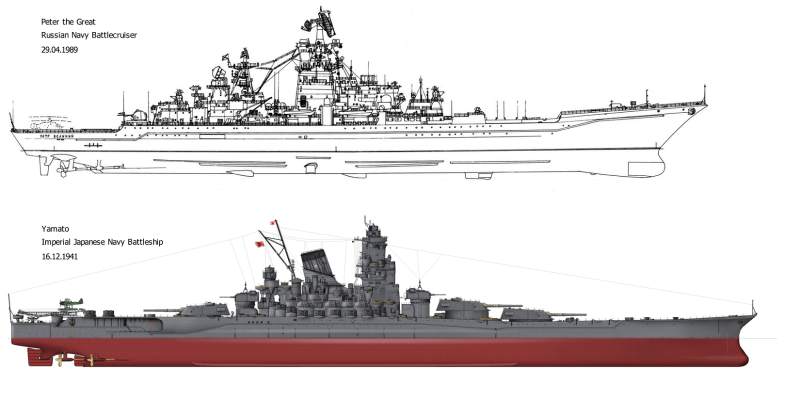
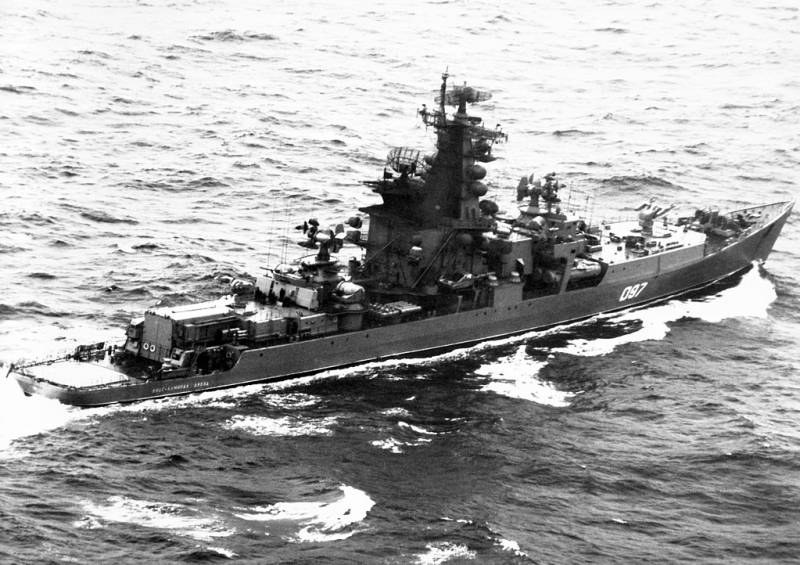
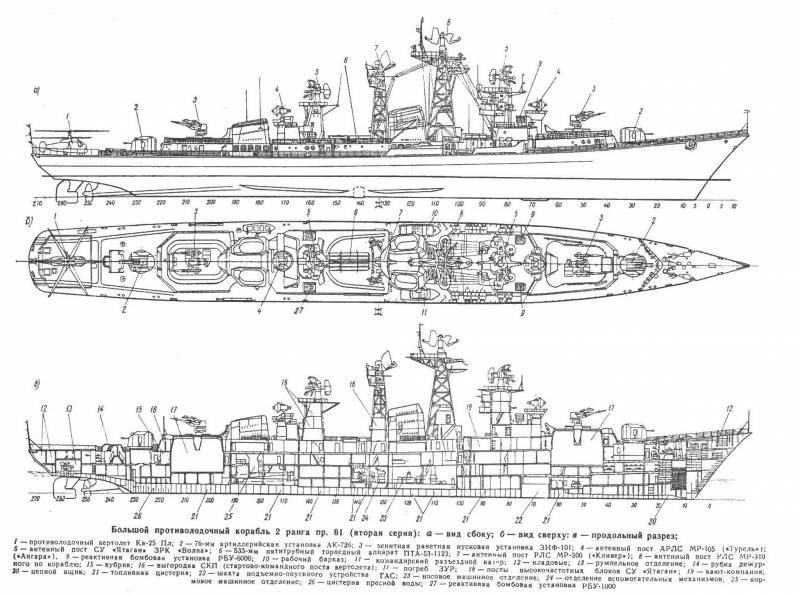
Information